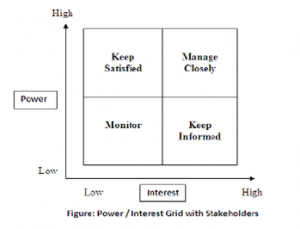Stakeholder Management in Projects
The success of projects relies on the achievement of its objectives in terms of timely delivery and completion within the budget. However, another important criterion for the success of the project is meeting the stakeholder’s expectations. Stakeholders are those who have a stake/interest in the project and will be affected by the project in some way. The stakeholder may get the benefits from the project and have a decisive role in it, for example, the construction of a metro train project is beneficial for the daily commuters, but it is highly damaging for those whose houses/shops have been demolished, will have a negative role for it and may try to stop it.
Importance of Stakeholder Management
Stakeholders are also known as risk-takers. Examples of stakeholders in a construction project are building users, sponsors, clients, neighbors, project employees, project consultants, sub-contractors, regulatory bodies, and the common public. The success of the project mainly depends on identifying the stakeholders and meeting/exceeding their expectations. If you have delivered the project on time, but the end-user is not happy with the quality of materials and workmanship, the project can never be declared successful. An experienced project manager identifies the stakeholders even before the project is started. He develops an appropriate strategy to analyze the stakeholder’s interests and manage them successfully. It helps in winning the support of key stakeholders to get more resources, which helps in the timely completion of the project. Understanding the needs and powers of stakeholders also helps in keeping the project moving smoothly.
Types of Stakeholders
A project manager has to deal with two types of stakeholders:
Internal stakeholders:
These are the stakeholders that are directly involved in the work of the project. Examples include project team members, top management, client representatives, and project sponsors.
External Stakeholders:
External stakeholders are the people or an organization that is not related to the project or the client organization. However, they still get affected and are at stake by the outcome of the project. These stakeholders include:
- The users of the project outcome.
- The government, which authorizes the realization of the project.
- The people who travel through the route where the project takes place or visit any area near the project site.
- The neighbors or people nearby the project site, are affected.
Stakeholder Analysis:
The primary use of stakeholder analysis is to understand the needs of the stakeholders and prioritize resource utilization. This analysis could be done through three steps which are as follows:
- Firstly, it is important to identify the stakeholders to manage their requirements. This identification process is done by involving the whole team of the project.
- The next step is to understand the interests of the stakeholders and how they influence the entire This interests analysis effort depends on the perception of the team and the Power/Interest grid is an essential tool for this process.
- The final step is to decide whether they have a positive or negative effect on the project.
Power/Interest Grid:

After the identification of the stakeholders for the project, they are classified based on their power and interest in the project, and the strategy to manage them is adapted accordingly. For example, if we consider the client of the project, he is classified as a stakeholder with high power and high interest. You have to manage him carefully. Contrary to that, the general public interested in the project but can’t influence it should be kept informed only about its importance. The success of the project lies in how you manage the stakeholders and win support for the project. On the other hand, the project manager must keep an eye on the stakeholders who have the power to undermine the project.
Conclusion:
The project stakeholders should be identified at the start of the project, and their expectations, interest, and power to influence the project should be evaluated. The success of the project depends mainly on the identification of stakeholders and the appropriate management strategy.
Contact Leopard Project Controls for your Construction Scheduling Projects.





